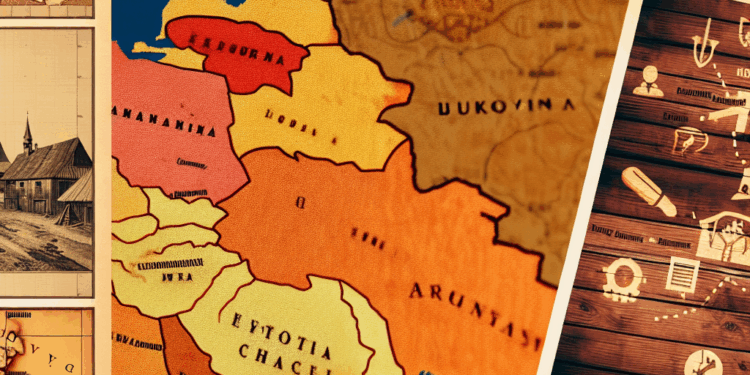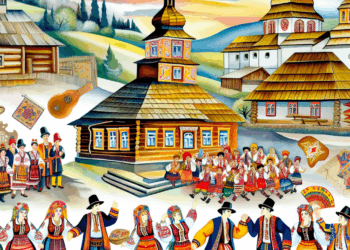Introduction
Bukovyna is a historical and cultural region located on the border of present-day Ukraine and Romania. The region has experienced many territorial changes and annexations during its existence. In this article we will look at the key events that took place in the twentieth century, from 1775, when Bukovina was annexed to the Austrian Empire, to the modern borders.
Annexation to the Austrian Empire (1775)
In 1775, Bukovina was annexed by the Austrian Empire during the division of the lands of the Principality of Moldavia. Like many other territories, it had strategic importance and was also an important cultural centre. After the annexation, administrative reforms were carried out, which included the creation of a province in which the infrastructure was improved and the economy developed. The capital of Bukovina became Chernivtsi, a city that became an important cultural and commercial centre of the region.
First union with Romania (1918)
After World War I and the collapse of the Austrian Empire, Bukovina was declared part of Romania in 1918. This event took place against the background of the general aspiration of the people for self-determination, which was topical at that time. On 15 November 1918, after the collapse of Austria-Hungary, Ukrainian and Romanian deputies signed the “Declaration of Reunification” of Bukovina with Romania. This was adopted against the backdrop of Geneva, where a meeting of representatives of the victorious countries in the First World War was held.
It is important to note that the accession was supported by part of the local population, but other groups felt disadvantaged in their national rights. However, just a few years later, in 1940, the union would be questioned again.
The Soviet period and annexation (1940)
In 1940, there was a new change in the territorial status of Bukovina. As a result of the Molotov-Ribbentrop Pact signed between the Soviet Union and Nazi Germany, the USSR gave Romania an ultimatum and took control of the northern part of Bukovina. On 28 June 1940, the Soviet army entered Chernivtsi and the region was incorporated into the Ukrainian SSR.
The period of Soviet rule was marked by radical changes – nationalisation, collectivisation and cultural suppression of the local population. Russification pressure on the Ukrainian and Romanian population increased, leading to inter-ethnic conflicts and social tensions.
World War II and the Return of Romania (1941-1944)
With the outbreak of World War II in 1941, Germany and Romania conducted a joint military operation, returning Bukovina to Romanian control until 1944. This time was marked by brutal repression of the Jewish population, as well as Romanians and Ukrainians who opposed the regime. After Germany’s defeat on the Eastern Front, the Soviet Union annexed Bukovina again in 1944.
Current borders
After World War II, the status of Bukovina was finally fixed. As a result of the Yalta and Potsdam Conferences held in 1945, it was determined that Bukovina remained within the Ukrainian SSR. With the collapse of the Soviet Union in 1991 and the formation of independent Ukraine, Bukovyna was transferred to the new state.
The modern borders of Bukovyna run between two states, Ukraine and Romania. Although the region continues to be ethnically diverse, the population feels the influence of its history and seeks interaction between the countries. In recent decades, Ukraine and Romania have actively negotiated cultural exchange and economic co-operation.
Conclusion
The history of Bukovina in the twentieth century is a complex and diverse process that illustrates the dynamics of territorial changes, annexations and ethnic relations in Central Eastern Europe. From Austrian influence to Soviet rule and modern borders, the region continues to influence cultural and political processes in Ukraine and Romania. Inspired by their multi-ethnic history, the people of Bukovina strive to preserve their unique identity in the context of global change.








